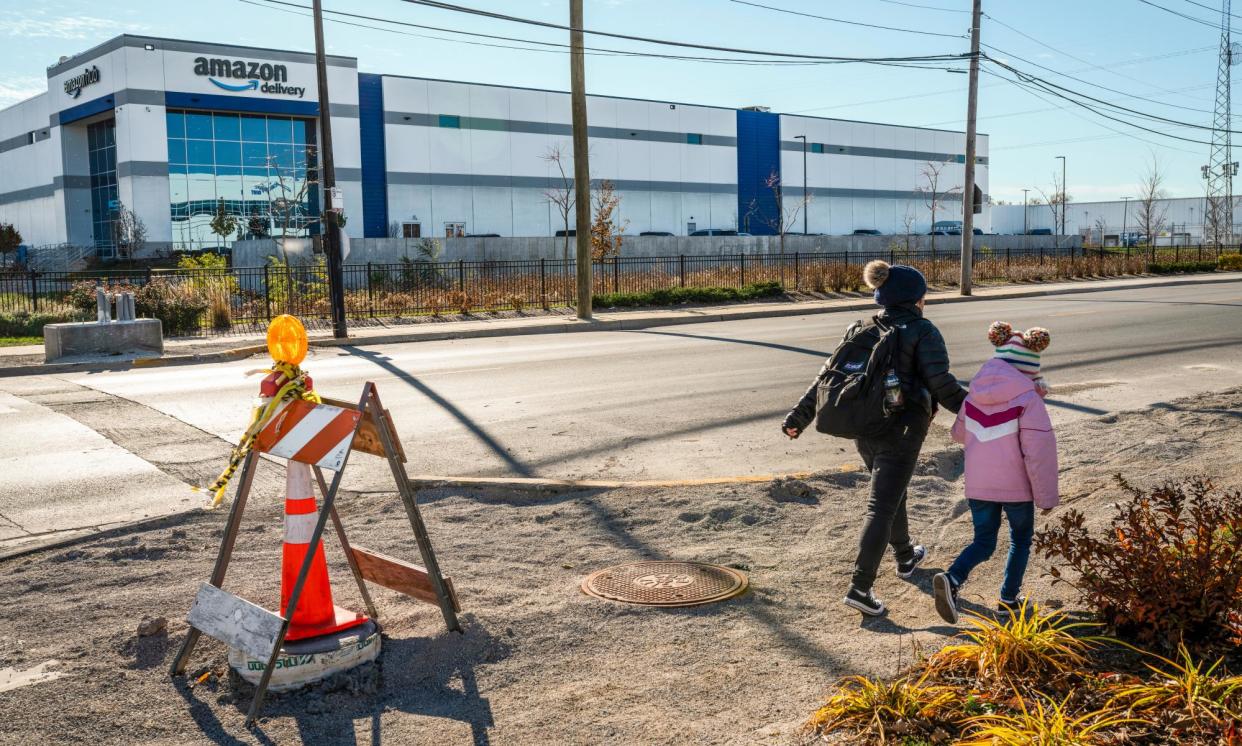Mega-warehouses heap more pollution on hard-hit Illinois neighborhoods

Hundreds of mega-warehouses have been built in Illinois for online shopping in recent years and the rise in delivery trucks is polluting neighborhoods already burdened with poor air quality, a new study says.
Two million people in Illinois live within a half-mile of large warehouses, which are disproportionately located in low-income neighborhoods and communities of color.
A new report by the Environmental Defense Fund (EDF) identified at least 2,400 leased warehouses covering 632m sq ft – a 33% rise from the previous decade.
Related: Noise, pollution, danger: how Amazon warehouses upended a sleepy New York neighborhood
“When you order a new toothbrush online or a new pair of shoes, these items are generally stored in large warehouses that are increasingly being built across our communities,” said Sam Becker, global clean air project manager at the EDF and author of the report.
“They’re brought to your door generally by a truck that’s burning diesel, emitting harmful pollutants into the communities that it’s passing through.”
Tailpipes of diesel trucks spew black carbon, nitrogen oxide and fine particulate matter, or PM 2.5, into the air. Exposure to these pollutants increases the risk of childhood asthma, pre-term births, heart disease and stroke. Children, elderly and pregnant people are especially vulnerable to traffic-related air pollution.
The report findings show that these mega-warehouses are largely concentrated in communities of color. Hispanic, Black and low-income people live near warehouses at rates that are 195%, 137% and 125% more likely, respectively, than would be expected from statewide demographics.
“Transportation systems are set up in a way that adversely affects communities of color and low-income communities,” said Cesunica Ivey, assistant professor of civil and environmental engineering at the University of California Berkeley.
People of color are more than twice as likely as white people to live in areas with failing air quality. Decades of discriminatory practices known as “redlining” made way for zoning laws that permitted placing highways, industrial facilities and major shipping hubs in and around communities of color.
“We built this economy where we rely so heavily on moving goods,” said Jose Acosta-Cordova, senior transportation analyst at the Chicago-based Little Village Environmental Justice Organization. “But the reality is that these facilities are killing our communities.”
Many warehouses across Illinois rely on low-wage temporary workers, 85% of whom are Black and Hispanic.
“There’s not necessarily this dividing line between warehouse workers and the neighborhoods where they live,” said Zhenya Polozova, policy coordinator at the Warehouse Workers for Justice. “It essentially results in them not being able to escape the harmful impacts of diesel pollution at home or at work.”
Illinois state legislature is currently considering the Warehouse Pollution Insights Act, a bill that would require facilities to report data on warehouse ownership, truck trips, and air emissions to the Illinois Environmental Protection Agency. If passed, it would also ensure that new warehouses install charging infrastructure that would support electric delivery vehicles.
“We need to target the rollout of electric heavy-duty trucks in communities that are adversely impacted,” said Regan Patterson, assistant professor of civil and environmental engineering at UCLA. “Increase in warehouses is not only happening in one area, but nationally it’s continuing to replicate the same racial and socio-economic patterns of disparity.”
Past EDF research has shown that roughly 15m people across 10 US states, and one in four people in New York state, live within a half-mile of a warehouse.

 Yahoo News
Yahoo News 
